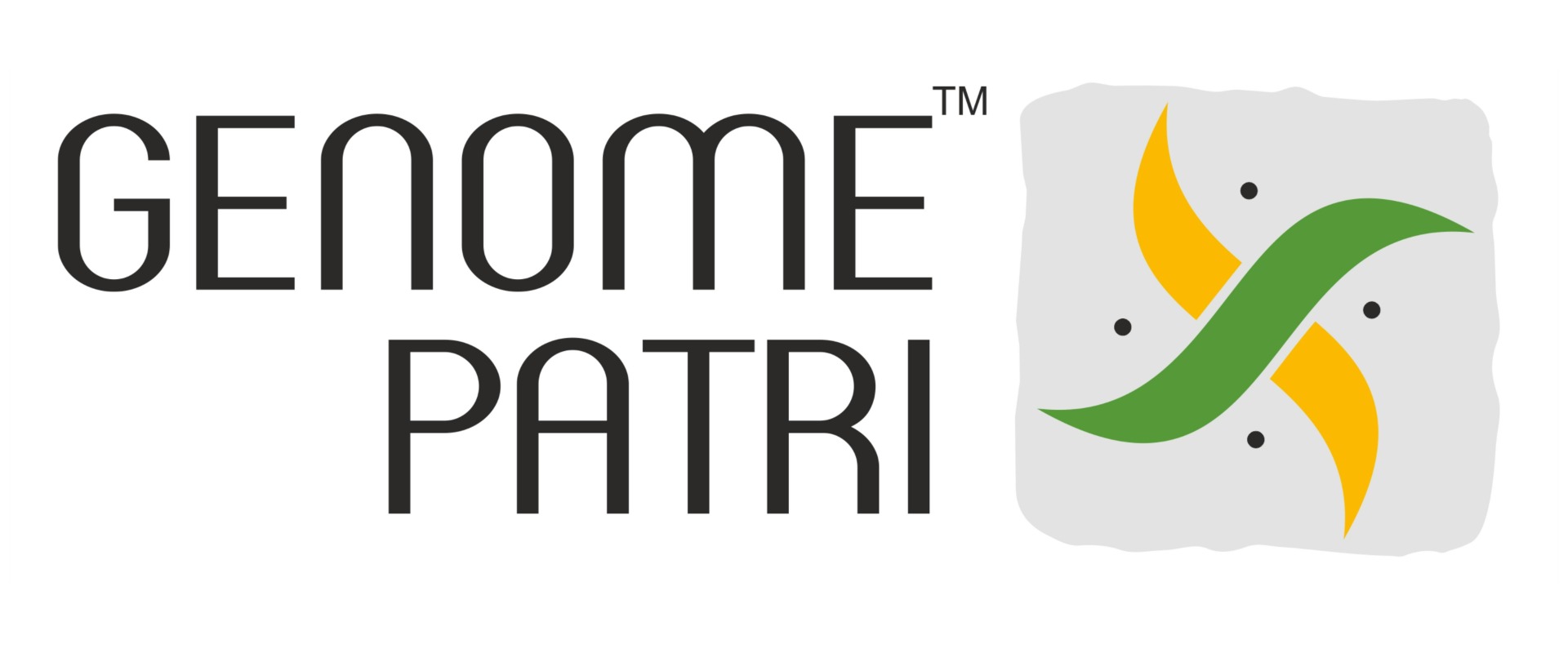Sun Smart Behaviour and Skin Check How Genomics Can Help
May 19, 2023
1441 Views
Melanoma and Skin Cancer Awareness Month, observed every May, serves as a crucial reminder of the importance of sun safety, early detection, and genetic factors in combating skin cancer. While sun exposure is a significant risk factor, genetics also play a role in an individual‘s susceptibility to melanoma and other forms of skin cancer.
There are several types of skin cancer, with melanoma being the most dangerous and aggressive form.
Here is a brief overview of the different types of skin cancer:
1. Basal cell carcinoma (BCC)
Basal cell carcinoma is the most common type of skin cancer. It typically develops in areas that are frequently exposed to the sun, such as the face, neck, and hands. BCC usually appears as a small, raised, pink or pearly bump on the skin. It grows slowly and rarely spreads to other parts of the body. While it is not usually life-threatening, it can cause local damage if left untreated.
2. Squamous cell carcinoma (SCC)
Squamous cell carcinoma is the second most common type of skin cancer. It also primarily develops in sun-exposed areas but can occur in other parts of the body. SCC often presents as a firm, red nodule or a scaly, crusted patch on the skin. Unlike BCC, SCC has a higher risk of spreading to nearby lymph nodes and other organs. Early diagnosis and treatment are essential to prevent complications.
3. Melanoma
Melanoma is a less common but more dangerous type of skin cancer. It originates in the pigment-producing cells (melanocytes) in the skin. Melanoma can develop in existing moles or appear as new growth. It often exhibits irregular borders, variations in colour, and changes in size and shape. Melanoma has a higher tendency to metastasize and spread to other parts of the body, making it potentially life-threatening. Early detection is crucial for successful treatment and improved survival rates.
Here are some common symptoms to be aware of
1. Moles with Irregular Characteristics:
- Asymmetry: One half of the mole does not match the other half.
- Border: The edges of the mole are irregular, scalloped, or poorly defined.
- Color: The mole has uneven colours, such as shades of black, brown, tan, red, blue, or white.
- Diameter: The mole is larger than 6 millimetres (about the size of a pencil eraser), although melanomas can also be smaller.
- Evolution: The mole changes in size, shape, colour, or elevation, or new symptoms appear, such as itching, bleeding, or crusting.
2. New or Unusual Growth on the Skin:
- A new mole, bump, or growth on the skin that appears suddenly or grows rapidly.
- A sore that doesn‘t heal or recurs.
- A spot or growth that itches, hurts or becomes tender.
3. Changes in Existing Moles:
- Changes in an existing mole, such as enlargement, elevation, or the development of a lump within the mole.
- Changes in the texture, surface, or pigmentation of a mole.
- The surrounding skin of a mole becoming red, swollen, or tender.
It‘s important to remember that these symptoms are not exclusive to melanoma and can be present in other skin conditions as well. However, if you notice any of these symptoms or any other changes on your skin that concerns you, it is essential to consult a healthcare professional, preferably a dermatologist, for a thorough examination and appropriate diagnosis.
Regular self-examination of the skin is also crucial in detecting any changes or abnormalities early on. There are different methods of screening and detection used for melanoma.
Here are the primary types of screening for melanoma:
1. Visual examination
The visual examination involves a healthcare professional, usually a dermatologist, examining the skin for any suspicious moles, lesions, or other abnormalities. During the examination, the healthcare provider will assess the size, shape, colour, and texture of the skin lesions to determine if further investigation is necessary. This examination may include a full-body skin check, where the entire skin surface is examined, including areas that are not typically exposed to the sun.
2. Dermoscopy
Dermoscopy, also known as dermatoscopy or epiluminescence microscopy, is a non-invasive technique that uses a dermatoscopy—a handheld instrument with magnification and lighting—to examine skin lesions more closely.
3. Total Body Photography
Total body photography involves capturing high-resolution photographs of the entire skin surface, including both visible and non-visible areas. These images serve as a baseline for future comparisons and can help detect changes in moles or the appearance of new lesions over time.
4. Sequential Digital Dermoscopy Imaging (SDDI)
Sequential digital dermoscopy imaging, or sequential digital dermoscopy follow-up, involves taking dermoscopic images of specific moles or lesions at multiple time points and comparing them over time.
It‘s important to note that while these screening methods can assist in the detection of melanoma, a definitive diagnosis is typically made through a biopsy. Suppose a suspicious mole or lesion is identified during a screening. In that case, a dermatologist may recommend performing a biopsy, which involves removing a small sample of tissue for further examination under a microscope.
Preventing melanoma involves taking proactive measures to protect your skin from harmful ultraviolet (UV) radiation.
Here are some key steps you can take to reduce your risk of developing melanoma:

1. Limit sun exposure: Avoid prolonged sun exposure, especially during peak hours when the sun‘s rays are strongest (usually between 10 a.m. and 4 p.m.). Seek shade whenever possible and use umbrellas, hats, or protective clothing to cover exposed skin.
2. Wear protective clothing: When you‘re out in the sun, wear long-sleeved shirts, long pants, and wide-brimmed hats to shield your skin from direct sunlight. Choose lightweight and breathable fabrics that offer UV protection.
3. Apply sunscreen: Regularly use a broad-spectrum sunscreen with a sun protection factor (SPF) of 30 or higher on all exposed skin. Apply it generously and reapply every two hours, or more frequently if you are sweating or swimming.
4. Protect your eyes: Wear sunglasses that block both UVA and UVB rays to protect your eyes and the surrounding skin.
5. Avoid tanning beds: Artificial tanning beds emit harmful UV radiation and increase the risk of skin cancer, including melanoma. Avoid using tanning beds altogether.
6. Perform regular self-examinations: Check your skin regularly for any new or changing moles, growths, or lesions. If you notice any suspicious changes, such as asymmetry, irregular borders, or changes in colour or size, or if they are evolving over time, consult a dermatologist for further evaluation.
7. Get regular skin screenings: Schedule routine skin examinations with a dermatologist, especially if you have a family history of melanoma or if you have many moles or atypical moles.
8. Protect children: Teach children sun safety habits from an early age and ensure they are well protected from the sun. Children should wear sunscreen, protective clothing, and hats when outdoors.
9. Be cautious of medications: Some medications can increase your sensitivity to the sun. Consult with your healthcare provider or pharmacist to understand the potential side effects and take necessary precautions.
10. Be mindful of UV exposure: Remember that UV radiation can still be harmful on cloudy or overcast days, and it can penetrate through glass, so take precautions even when you‘re indoors or driving.
Let’s further understand how genetics is important in all of this -
Understanding the genetic component
While excessive sun exposure remains the primary environmental risk factor for skin cancer, genetic factors can contribute to an individual‘s susceptibility. Certain gene mutations, such as those in the CDKN2A and CDK4 genes, have been identified as risk factors for familial melanoma. Additionally, individuals with a family history of melanoma or other skin cancers may have an increased risk due to inherited genetic variations. Understanding the genetic component of skin cancer allows for personalized risk assessment and management strategies.
Importance of genetic testing and genetic counseling
Genetic testing can identify specific gene mutations associated with an increased risk of melanoma and other skin cancers. It enables individuals to gain insight into their genetic predisposition, helping guide their sun protection practices and screening recommendations. Genetic testing is particularly valuable for those with a strong family history of melanoma or other hereditary cancer syndromes. By identifying high-risk individuals early on, appropriate surveillance and intervention strategies can be implemented to reduce the chances of developing skin cancer.
Genomepatri™ is Mapmygenome’s comprehensive assessment of genetic risk for lifestyle disease, predisposition to traits, carrier status, and drug responses. It gives you an easy-to-read report on health conditions like skin cancer, heart health, diabetes vitamin deficiencies, and more. Genomepatri will help you to start a proactive and personalized approach toward health.
Genetic counselling plays a crucial role in melanoma and skin cancer prevention and early detection, especially for individuals with a family history of the disease. Genetic counsellors are healthcare professionals specialized in assessing an individual‘s risk of inherited cancer predisposition. Genetic counselling can provide personalized recommendations, taking into account an individual‘s genetic predisposition, skin type, and environmental factors. This holistic approach empowers individuals to make informed decisions about sun protection, minimizing their risk of developing skin cancer.


